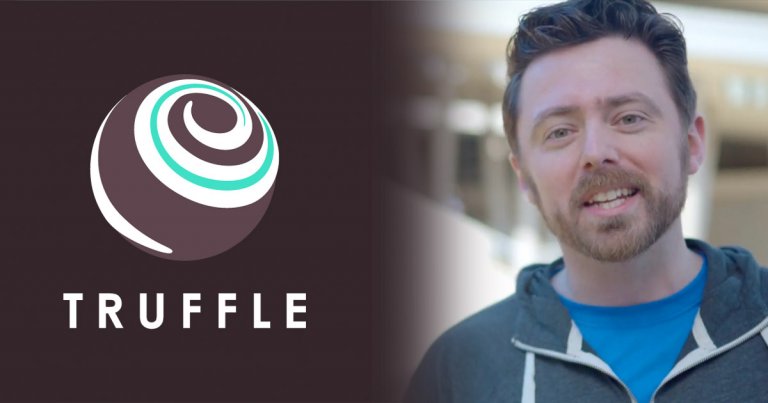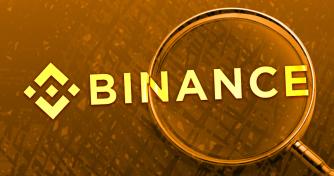 Interview: Ethereum development suite Truffle CEO on the future of dApps, regulation, and Libra
Interview: Ethereum development suite Truffle CEO on the future of dApps, regulation, and Libra Interview: Ethereum development suite Truffle CEO on the future of dApps, regulation, and Libra

Cover art/illustration via CryptoSlate. Image includes combined content which may include AI-generated content.
We interviewed Tim Coulter, the founder and CEO of Truffle, an Ethereum development environment, testing framework, and asset pipeline. On August 2nd, at the Microsoft Campus outside of Seattle, the company will host its second annual TruffleCon, an event dedicated to ETH developers.
Before blockchain, Coulter built a career specializing in software testing and developer support, which became extremely valuable in the early days of blockchain development. He’s now surrounded by an high-caliber team building the next generation of blockchain development tools. Below is a question and answer session with Tim Coulter (TC).
How did you get started in blockchain and why did you start Truffle?
TC: I became interested in blockchain technology right after the Bitcoin boom of 2013. After hearing about the boom and how I had missed out, I became so interested in the tech that I immediately started mining and trading Bitcoin and other cryptocurrencies. When the startup I was working for ran out of money in early 2015, I decided to work in blockchain full time. That’s when I found Ethereum and ConsenSys, and have been an Ethereum convert ever since.
I built Truffle out of necessity after starting at ConsenSys. My goal coming in was to build blockchain applications, though I quickly learned Ethereum lacked the development tooling necessary to make that process easy. What started out as a few scripts meant to make my life easier turned into a suite of development tools aimed at making all developers’ lives easier.
What is the mission of Truffle and TruffleCon?
TC: We want to make building blockchain applications as enjoyable as eating a chocolate truffle. To that end, we want to build the tools developers and enterprises need to create maintainable, professional applications on top of blockchains and distributed ledger technologies.
At TruffleCon, we want to bring the members of our community together to share experiences and teach one another how to build blockchain applications with Truffle. We’ve gathered an amazing lineup of speakers showing off what’s new in the blockchain space and how the industry is evolving (we even have legal talks there for developers that need it). We’ll also be presenting the future of Truffle and how we’re gearing up to take on enterprise blockchain development. We’ll be making some big announcements main stage with the help of some big-name enterprises, so don’t miss it.
What is ConsenSys’ involvement with the Truffle company and the event?
TC: Truffle was started within ConsenSys as a much-needed development project. ConsenSys helped incubate Truffle and provide the funding necessary to build tooling used by the whole blockchain development ecosystem. Truffle recently spun out of ConsenSys in March with $3 million in funding to take on the growing and complex needs of enterprise blockchain development.
What will blockchain dApp development look like in the next 5-10 years?
TC: This is a great question, and likely something I’d need more time to discuss. I recently posted my thoughts on POVCrypto, a podcast I was featured in recently, where advancements in blockchains and distributed protocols could change the state of application development as we know it. Bottom line, whether or not those idyllic advancements occur, I do know blockchain technology is going to permeate all manner of industries, providing new ways for individuals and companies to interact in a connected world.
How important are tokenomics in dApp development?
TC: This highly depends on the application. Tokens provide incentives for behavior, as well as a record of ownership of certain on-chain and off-chain assets. Some tokens are likely to power blockchain commerce, like DAI, and of course, Ether, will always be a required token to run the network itself. Not all dApps require a token, though we’re likely to see tokens as a mainstay in any application that uses the blockchain as a system of record.
Why or why shouldn’t a dApp use a native token?
TC: Tokens already exist in daily life, and having tokens on chain is no different. For instance, like Ether, physical tokens power arcades, and you have to purchase those tokens to play games. Tickets to the movie theater are a form of token: If you hold a ticket, you’re given access. The deed to your house is another token, it signifies that you have ownership over that property. As we build applications on top of the blockchain, we’ll need tokens in order to record things like ownership, provide access, or take payments. Some tokens are specifically designed to incentivize certain behaviors (e.g. they’re not transferable, or expire, or hold less value over time) and those tokens can be used to code beneficial interactions between all participants.
Is the U.S. at risk of falling behind in blockchain innovation?
TC: I don’t think so. I think our legal panel at TruffleCon will provide their own perspective, but in my view, ConsenSys, Libra, and other players in the blockchain space are working hard to push regulations that are favorable to blockchain innovation. So far, I’ve seen the SEC treat crypto assets as favorably as possible in relation to non-crypto assets, so my hopes are high that these policies will continue.
What is your opinion on Libra?
TC: Libra is an exciting project. It’s bound to bring cryptocurrency to the masses, and for that, I’m excited. There’s still some uncertainty around its technical and social ramifications, but if one thing is sure, it’s that Facebook has the will and financial backing to educate our legislature on the benefits of cryptocurrency and blockchain development. So, all in all, I think it’s a win for the industry.
Why did you choose Seattle as the event location?
TC: Microsoft graciously offered to host our event this year. We recently partnered with Microsoft to build world-class development tooling for blockchain applications.
What should attendees expect to get out of the event?
TC: The first day of TruffleCon, Friday, is filled with full-day workshops. Here, attendees will gain close instruction on their topic of choice, diving deep into technical details and learning blockchain development directly from experts. These workshops were highly regarded last year as an amazing and inexpensive learning experience, providing attendees the opportunity to ask questions in a classroom-like format.
The next two days of the conference, Saturday and Sunday, are our main stage keynotes and talks from our wonderful speakers. The keynotes will include updates from me and the Truffle team and will include some exciting announcements about the future of Truffle and how we’re tackling enterprise blockchain development. The conference talks cover everything from smart contract development, to design, to security and the legal ramifications of blockchain development. These talks come from amazing community members and shouldn’t be missed!
Which speakers are you most excited are attending?
TC: Personally, I really want to see the talk from Alishba Imran, a 16-year-old blockchain developer who has a pedigree in blockchain development nearly longer than mine! Especially longer than what I had when I was 16. She’s extremely impressive, and I can’t wait to meet her. I’m also excited about a legal panel we’re hosting with five different legal professionals, talking about the legal ramifications of blockchain development.
We have tons of amazing talks so it’s very hard to choose. You can see the list of speakers and our conference agenda here.
TruffleCon 2019 will be held at the Microsoft Campus on August 2-4. For more information, watch the video below or click here.




































































